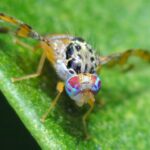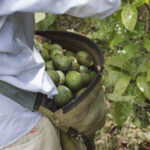California is now free of invasive fruit fly

The U.S. Department of Agriculture's (USDA) Animal and Plant Health Inspection Service (APHIS) and the California Department of Food and Agriculture (CDFA) announced that after a year of hard work, they have successfully eradicated all invasive fruit fly populations in the state.
“Invasive fruit flies are among the most destructive and costly pests globally, threatening more than 400 species of fruits and vegetables, including many of California's most valuable crops, such as oranges, grapes, mangoes, blueberries, and tomatoes,” said USDA Under Secretary for Regulatory and Marketing Programs Jenny L. Moffitt.
“The eradication of these pests marks a major victory for California's agricultural economy,” she added
USDA detailed that the joint eradication effort addressed infestations of five introduced species: Oriental (Bactrocera dorsalis), Tau (Zeugodacus tau), Queensland (Bactrocera tryoni), Mexican (Anastrepha ludens) and Mediterranean (Ceratitis capitata) fruit flies.
Related articles: Oriental fruit fly quarantines lifted in California
With its successful eradication, quarantines have been lifted in Contra Costa, Los Angeles, Orange, Sacramento, San Bernardino, Santa Clara, San Diego, Riverside, and Ventura counties, freeing thousands of acres of commercial agriculture from restrictions.
The agency stressed that the fruit fly outbreak in 2023 was unprecedented and marked the worst of its kind in the 100-year history of the CDFA. The outbreak included, for the first time, quarantines for Tau and Queensland fruit flies in the United States and the Western Hemisphere.
At that time, in response to the emergency, USDA Secretary Thomas Vilsack allocated $103.5 million from the Commodity Credit Corporation to APHIS, which enabled rapid and effective action to be taken against the outbreak.
APHIS deployed hundreds of employees to join forces with CDFA and the commissioners of agriculture for trapping, fruit removal, and survey activities. The team leveraged advanced eradication techniques, including the release of sterile Mediterranean and Mexican fruit flies, to disrupt the reproduction of these invasive species.
The cooperative effort also included the application of an organic treatment called Spinosad and the development of new regulatory treatments, for the safe shipment of commercial citrus out of quarantine areas.
CDFA Secretary Karen Ross emphasized the importance of public cooperation in these efforts.
“We are proud of what we have accomplished with the help of California residents. Their support was vital to eradicating these pests and continues to be essential to protecting our food supply and natural resources from future invasive threats,” she said.
*Featured picture by USDA.














































